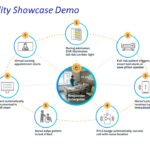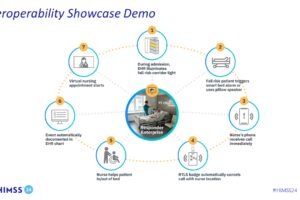Recently, I’ve become uncomfortable with the buzzword of health care reform in our time: “value-based care.” We’ll look closely at that term in this article and sketch out some paths forward to something better.
Some context: During the 15 years that I’ve been covering health care IT, commonplace terminology has been repeatedly re-examined. The terms chosen by clinicians and payers say a lot about biases and assumptions, and the field has seen many shifts with the goal of educating us to be more sensitive. (The terms “No-show” and “non-compliance” are on the outs, for instance.)
Value-based care, and the earlier phrase “fee-for-value” it seems to have replaced, are monikers for a commendable and crucial movement to meet the patients where they are, with the hope of significant gains in treating chronic conditions. But the word “value” indicates we’re still more concerned with the payer’s point of view than the health of the patient.
So what difference does it make to shift from value-based care to my suggested replacement, patient-centered care? Is this like so many putatively progressive initiatives that just shuttle from one euphemism to another? Not if we think about its implications.
I’m aware that many health care reformers don’t like referring to the people being helped to better health as “patients,” but I haven’t seen a better word and will stick with it. (I’m encouraged by seeing the use of the term by the Society for Participatory Medicine.)
This article explores some fundamental changes that could accompany this shift in terminology, revolutionizing how we handle data and patient interventions.
Engagement For Life
We know that maintaining health is an endeavor that takes years, even decades. A successful endeavor must survive the departure of clinicians who have built relationships with the patient, as well as the patient’s own geographic moves, changes of provider, and changes of insurance. Treatment recommendations should also be tailored to the psychology of each patient.
Is there a message in this exhortation for people working with data and health IT? One major reform would move patient information out of the control of the providers and into the hands of the patients. This would ensure that data follows the patient wherever they go.
If treatment plans, remote monitoring, and other interventions are included in patient data, they would stay with the patient as well. And this long overdue shift would eliminate the exploitation and marketing abuses of patient data that clinical institutions have engaged in.
Proponents of universal coverage claim that it would make this continuity of treatment easier to achieve. The argument is made persuasively by T.R. Reid in The Healing of America: A Global Quest for Better, Cheaper, and Fairer Health Care. But I’m not sure that universal coverage is a sure-fire cure.
My first quibble is that universal coverage is politically unachievable in the United States. More fundamentally, universal coverage in other countries has not consistently led to long-term planning, universal data sharing, and the other benefits we want to see.
My main concern is that each new population brought by political reforms into the health care system has added serious cost burdens, because the people who historically have not received adequate treatment suffer from serious health problems.
So I wonder whether Reid was correct in thinking that universal coverage will lead to the reforms required to create engagement for life. The implementation order might need to be reversed: First put a new and holistic view of health in place, then institute universal coverage.
It Takes a Village
Another fundamental truth recently grasped by the health care field is the importance of a patient’s environment. Gradually, payers and clinicians are incorporating social determinants of health into their care, including attempts to empathize with the cultural views and immediate surroundings of the patients. Modern medicine must treat communities, not individual patients.
This is a tall order, requiring public health interventions that go beyond clinicians’ reach. Getting lead out of our homes and water would greatly reduce cancer and liver disease. Indeed, a lot of deaths come from air pollution, heat waves, floods, and other effects of climate change, which poses a global challenge. But clinicians can make a start.
A broad, environmental approach requires several improvements to data. One is a flexible standard that allows each community to represent the environmental and cultural aspects of health that are relevant to that community, while supporting data exchange to improve public health.
Another improvement would be a flexible form of data exchange that can work with the very different data systems that will be employed by clinicians, public health institutions, and community groups. Open source software would allow each player in a system to develop the appropriate system for its type of institution.
Privacy-preserving forms of data sharing, such as differential privacy and synthetic data, must be extended and made more common. Because these technologies provide access to particular, limited types of data (for instance, correlations between race and health outcome), the various different players in health care need to have a voice in specifying what questions are answered by systems using differential privacy or synthetic data.
And all the stakeholder groups must be trained in analytics so that they can make effective use of the shared data. No community can depend on outsiders to determine what’s important to know or how to derive the information from raw data. Data science must be democratized.
The Wellness Society
The recognition of social determinants of health acknowledges that endemic bad health are choices—society’s choices.
We have collectively decided, during some unnoticed and unmarked period of our history, to allow massive amounts of heart disease, obesity, asthma, and other illnesses. And we have unfairly placed the burden of treating these conditions on a medical profession trained historically to set bones and treat other acute incidents. The job of fixing chronic health conditions outstripts even the most strenuous efforts of the medical industry.
Anyone who watches the soaps or late-night news on TV (and therefore probably belongs to a demographic past the age of breakdancing and extreme rock climbing) has seen ads for pain-killers and other drugs offering temporary relief from chronic problems. (They air right after the ads for junk food and pollutant-spouting home equipment). To eliminate chronic health conditions on a large scale, we have to move from a pill-taking society to a wellness society.
I’ll celebrate the ascent to a wellness society when I’m watching TV and see an ad with beautiful production values where someone gets down from their truck and says:
I was always lifting and dragging things on eight-hour shifts, and my knees were killing me at the end of each day. So I talked to my boss and worked out a more ergonomic work situation.
Therefore, while endorsing a movement for patient-centered care, I’m looking to another stage that might be called “ecosystem care.”
If we truly care about the patient, and not just abstract measures such as service utilization, we need to aim at engagement for life, treating the community, and a wellness society. Some IT-related innovations that could further these goals include giving the patients back their own data, disseminating open source systems that are infinitely customizable while enabling robust data exchange, and training community members to carry out their own analytics.













